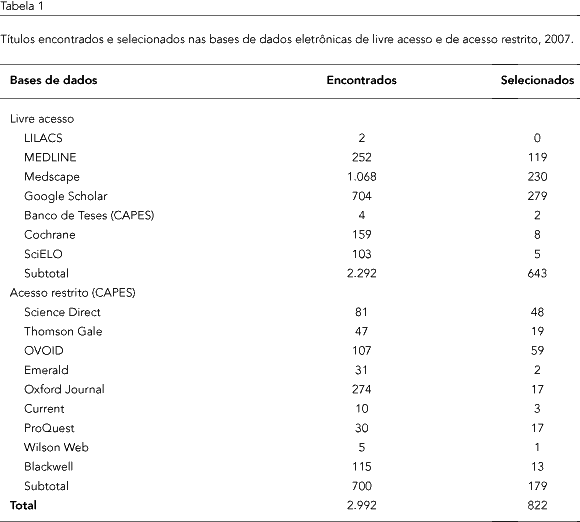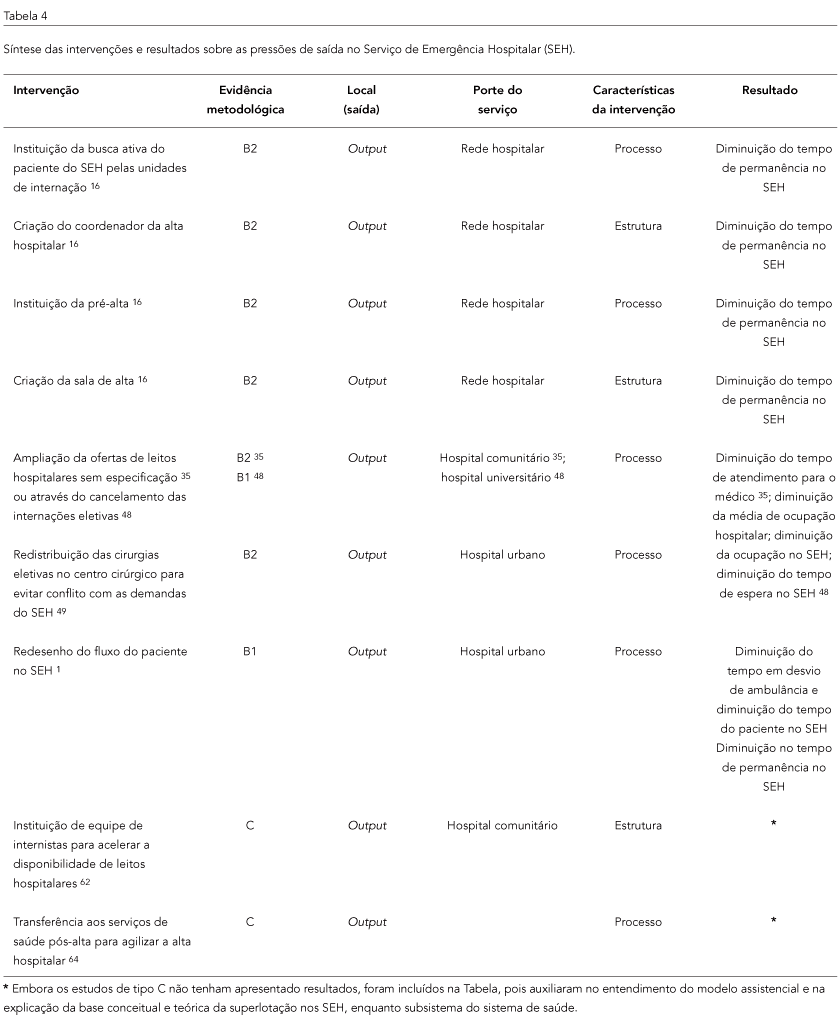This review discusses interventions aimed at solving the problem of overcrowding in hospital emergency services (HES), characteristic of low organizational effectiveness. In free-access and restricted-access databases, the target descriptors were "overcrowding; emergency; medicine; first aid". The survey identified 66 citations of interventions, grouped in 47 related interventions. The majority of the studies used observational designs that evaluated the results before and after interventions. Of the 47 related interventions, 34 had results for organizational performance. Four were the most frequently cited: implementation of an observation unit for patients already hospitalized and awaiting diagnosis or clinical stabilization; designation of a dedicated nursing station for the patient's admission, discharge, or transfer; establishment of protocols with indicators of operational saturation and implementation of an emergency care unit. Analyzing 21 interventions that were intended to solve overcrowding in HES and with positive results for length-of-stay, 15 were related to patient stream improvement, interfering actively and positively in patient stream. Interventions that increased access barriers or that merely improved the HES structure were ineffective.
Hospital Emergency Service; Hospital Administration; Review




